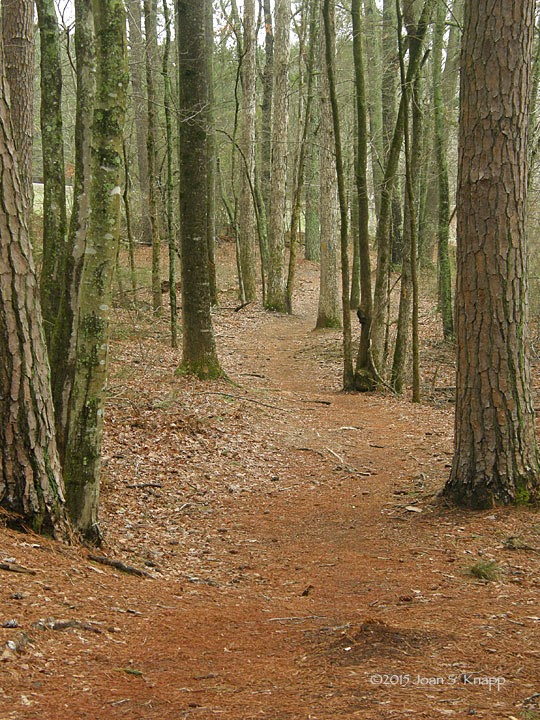March 20th. (Continued from…) I’ve started to
walk at Fort Yargo State Park in Winder, Georgia. One of my walks is from the Group Shelter A to the Old Fort
and back. This is a rewarding walks for viewing wildflowers.
The route which I described here. It was still early in the
season and I didn’t expect to find much in the way of plants but the weather
forecast was for fog and I wanted to take some photographs along the lake shore
in the fog.
A
small, but striking shield lichen.
This
was one of the most intriguing lichens on the rocks. The fruiting cups were
quite shallow, like little dishes rather than deeper cups.
One
of the few boulders covered with Resurrection Fern (Pleopeltis polypodiodes).
At
first glance, this lichen looked more like a mold. I photographed it but…
it
wasn’t until I got home and processed the image, that I could see that it was
covered with flat, irregularly shaped gray fruiting bodies. It was clear that I was
going to have to come back better prepared to photograph the many lichens on
the rocks in this area.
The
challenge will be identifying them. There is a reference text, Lichens of North
America, and a website contains illustrations of approximately 1,275 species of
lichens. The lichens on the website are organized alphabetically rather than
e.g., by whether they grow on wood or rock. Sounds like I will spend many happy
or frustrating hours browsing in an attempt to identify the lichens I’m
photographing.
I
found the patch of Cranefly Orchid (Tipularia discolor) leaves near the end of
the Rock Garden trail. The leaves were still in good condition.
Then
on down the trail to the Old Fort.
Along
the way, I found several trees – one in particular – with a lichen with black
fruiting bodies.
One
intriguing sighting was a fallen log covered with orange ‘growths’ which may be
a lichen. Only one log showed these growths.
Turning
around, I walked back along the upper trail.
I
examined the trunks of several trees by the trail that had shield lichens and
found one that had fruiting bodies. This was an unusual find. Many trees have
lichens but few of these have fruiting bodies.
Back
at the fishing area and looking south. There was still a hint of fog, adding
atmosphere to my walk.
Back
in the fishing area, I found Elliott’s Blueberry (Vaccinium elliottii) stems
with blooms.
To
my shame, I thought the green color on the water was due to an algal bloom.
Only, when I returned a week or so later, did I realize that this was the
beginning of the annual pine pollen season.
Back
down to the trail above the cliff, and...
towards
the first bridge.
Then
I saw these big buds but, since I’m not too familiar with trees, I’d have until
my next walk to identify this tree.
Finally,
back to the disc golf course, and...
the
final section of trail to the parking lot.
As
expected, I didn’t see too much in the way of wildflowers but the signs of
Spring and new life were there. I did find that the Rock Garden is a wonderful
source of lichens that I had not appreciated fully previously.
Related
posts:



















































